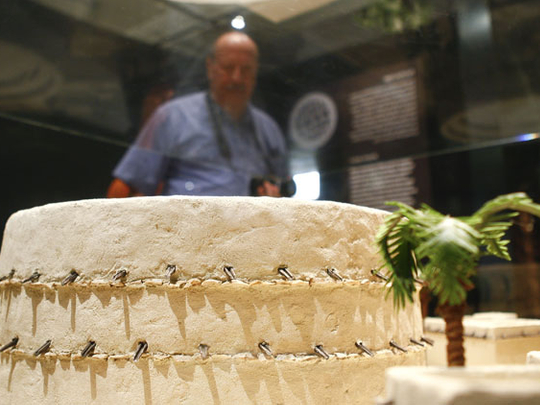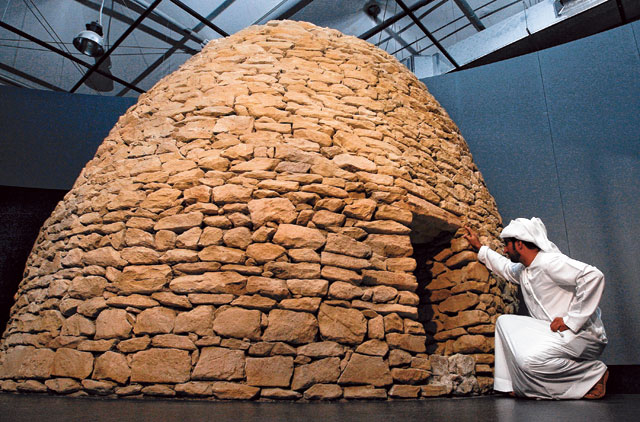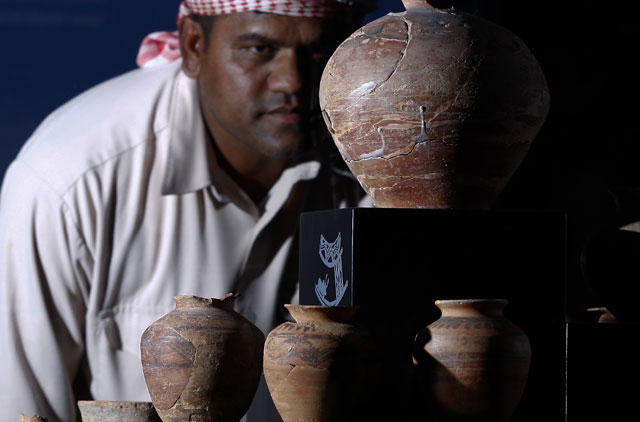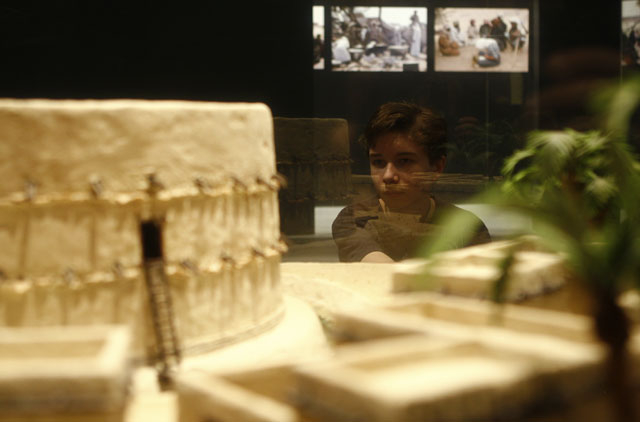
Al Ain: An archaeological exhibition that gave an insight into a time when Abu Dhabi was at the centre of a vibrant trading culture in the Arabian Peninsula ended Sunday.
Opened on February 2 by Shaikh Tahnoun Bin Mohammad Al Nahyan, the Ruler's Representative in the Eastern Region, next to the historic Jahili Fort, the exhibition titled ‘The Dawn of History' attracted thousands of visitors over the last three months.
Some of the artefacts date back to 10,000 years. The 4,500-year-old Hili Grand Tomb was the centrepiece of the exhibition that showcased the archaeological findings of the Danish experts between 1958 and 1972.
The event was organised by the Abu Dhabi Authority for Culture and Heritage (ADACH) and the Moesgard Museum in Denmark with the support of the Shaikha Salama Bint Hamdan Al Nahyan Foundation in Abu Dhabi.
The exhibition also highlighted a number of historical and archaeological sites in the region such as the Umm Al Nar settlement, the Hafit graves, Hili Grand Tomb, Hili Tower, and Qarn Bint Saud. The Umm Al Nar settlement and the excavations at this site revealed a new civilisation dating back to about 2400 BC.
Archaeological heritage
"We have been delighted to welcome thousands of visitors to this important exhibition," said Mohammad Khalaf Al Mazroui, Advisor for Culture and Heritage in the Court of the Crown Prince of Abu Dhabi and Director General of the ADACH.
He said: "We are very proud to present the archaeological heritage of the UAE to the public. Exhibitions such as this demonstrate the importance of international cultural cooperation."
The exhibition had been divided into 14 sections and tells the story of how the team from Denmark's Moesgard Museum found the artefacts.
These finds, said Al Mazroui, were guided by the vision of the late Shaikh Zayed Bin Sultan Al Nahyan who helped shape the people's understanding of the ancient history not just of Abu Dhabi but of the region as a whole. "Seeing the artefacts on display in such interesting surroundings is a rare snapshot of past life in the Arabian Peninsula," he added.
In the 1950s and 1960s, all the findings were shipped to the museum in Århus, the second-largest city of Denmark, to be conserved, recorded, and studied. They were then returned to Abu Dhabi after the opening of the National Museum in Al Ain in 1971.
Dr Sami Al Masri, Deputy Director General for Arts, Culture, and Heritage and Director of Strategic Planning and Development at ADACH, said the authority's strategy is to protect and maintain Abu Dhabi's archaeological resources and reinforce the role of culture and heritage as an important educational tool.
‘Greater understanding'
"The history and significance of the deeply-rooted civilisation of the UAE should be clearly understood by all and this exhibition enabled everyone to share the experience and cultivate greater understanding of this heritage," he said.
The authority has also been working on a project that aims to prepare maps showing the locations of sites where fossilised animal remains have been found in Abu Dhabi.
Most of these sites are in Al Gharbia in the Western Region of the Emirate.














